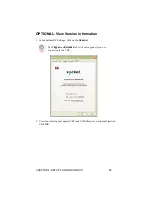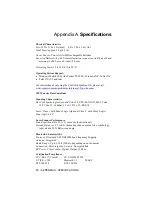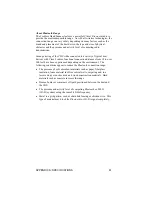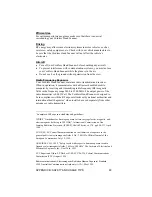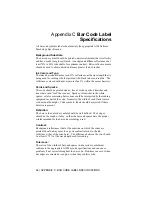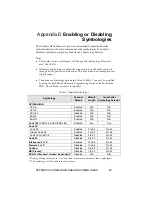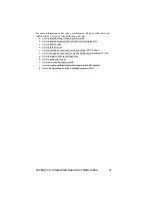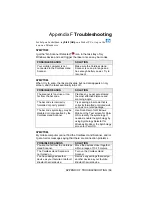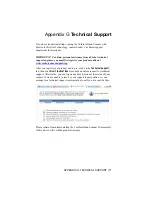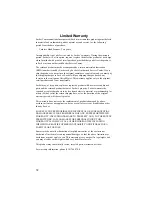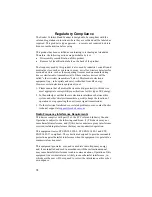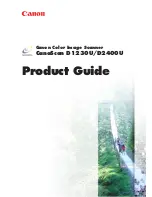
Efficient Use
For optimum performance, please make sure that there is no metal
surrounding your Cordless Hand Scanner.
Driving
RF energy may affect some electronic systems in motor vehicles, such as
car stereo, safety equipment, etc. Check with your vehicle manufacturer to
be sure that the Cordless Hand Scanner will not affect the vehicle’s
electronics.
Aircraft
•
Turn off your Cordless Hand Scanner before boarding any aircraft.
•
To prevent interference with communications systems, you must not use
your Cordless Hand Scanner while the plane is in the air.
•
Do not use it on the ground without permission from the crew.
Radio Frequency Exposure
Your Cordless Hand Scanner contains a radio transmitter and receiver.
When in operation, it communicates with a
Bluetooth
enabled mobile
computer by receiving and transmitting radio frequency (RF) magnetic
fields in the frequency range 2400 to 2500 MHz. The output power of the
radio transmitter is 0.001 Watt. The Cordless Hand Scanner is designed to
be in compliance with the RF exposure limits set by national authorities and
international health agencies
when installed or used separately from other
antennas or radio transmitters.
1
Examples of RF exposure standards and guidelines:
ICNIRP, “Guidelines for limiting exposure to time-varying electric, magnetic, and
electromagnetic fields (up to 300 GHz)”, International Commission on Non-
Ionizing Radiation Protection (ICNIRP), Health Physics, vol. 74, pp 494-533, April
1998.
99/519/EC, EU Council Recommendation on the limitation of exposure to the
general public to electromagnetic fields 0 Hz – 300 GHz, Official Journal of the
European Communities, July 12, 1999.
ANSI/IEEE C95.1-1992, “Safety levels with respect to human exposure to radio
frequency electromagnetic fields, 3 kHz to 300 GHz”, The Institute of Electrical and
Electronics Engineers, Inc., New York, 1991.
FCC Report and Order, ET Docket 93-62, FCC 96-326, Federal Communications
Commission (FCC), August 1996.
Radiocommunications (Electromagnetic Radiation Human Exposure) Standard
1999, Australian Communications Authority (ACA), May 1999.
APPENDIX B: SAFETY AND USAGE TIPS
63











